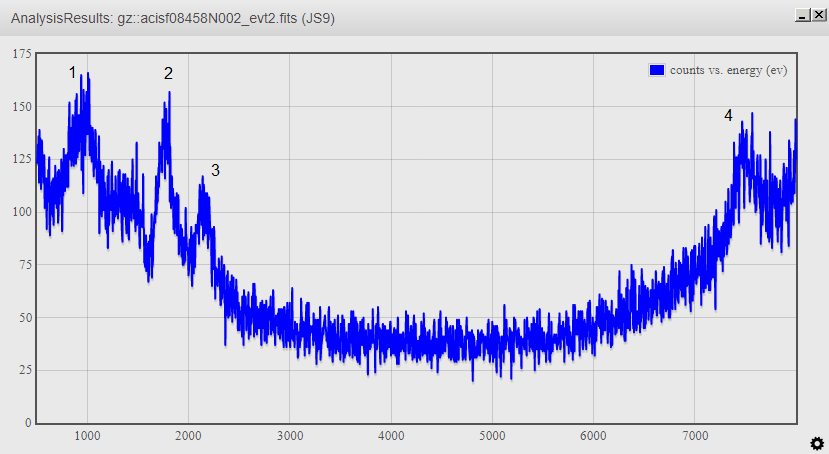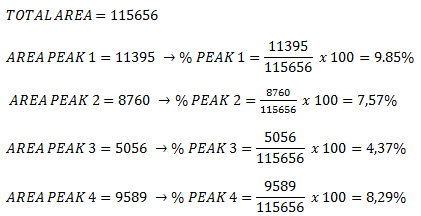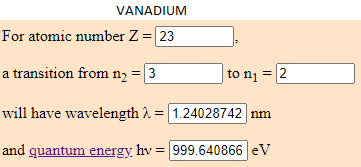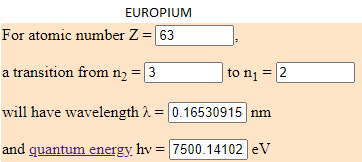I have analyzed the galaxy IC 10. It was discovered by Lewis Swift in 1887 and in 1935 Nicholas Mayall became the first to suggest that the object was extragalactic.
This is its energy spectrum from JS9 with its most importants energy peaks.

Then, I have calculated each peak's percentatge and find out which elements they contain.
I have used this formula:
 |
|
Here are my results:
 |
|
This supernova has:
- 9,85% of Vanadium (V) which energy is 999.6408 eV.
- 7,57% of Gallium (Ga) which energy is 1815.9827 eV.
- 4,37% of Arsenic (As) which energy is 2057.8618 eV.
- 8,29% of Europium (Eu) which energy is 7500.1410 eV.
COMPARISON
I have compared my results with other scientific results. According to the scientific article The chemical evolution of IC 10 by J. Yin et al (2010) the galaxy IC 10 contains helium, oxigen, nitrogen and sulfur.
- The chemical elements that I have obtain doesn't match to the results other astronomers got.
- Based on my investigation, this galaxy is form of vanadium, gallium, arsenic and europium.
- What I have done is to find the eV of the tallest peaks of the JS9 energy spectrum and discover what element corresponds to that enery.
|
|
|
|
|
I have calculated the electronvolt of this elements with the transition predetermined in this web (from the cap 3 to the 2). The atoms to jump from this capes have to be in a room temperature. Depending to the temperature, the element can have different energy. What is the same, a eV number can be from different elements if they are moving arround differents capes.
It can be possible that the atoms are not moving from the capes I have work with and this might be the reason why my results does not match with the scientifics results.
Another possibilty is that the element mentioned in the scientific have a smaller quantum energy that the ones I got so it can be possible that the part of the galaxy I have worked with has more energy that the part analysed by the scientifics.



